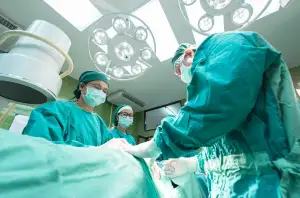Unlock the Secrets of Flawless Skin: Mastering the At-Home IPL Photofacial for Radiant Health

- Understanding the Benefits of IPL Photofacial
- Exploring the Safety of IPL Photofacial at Home
- Preparing for an IPL Photofacial at Home
- Step-by-Step Guide to Performing an IPL Photofacial at Home
- Post-Treatment Care and Recovery Tips
- Potential Risks and Side Effects of DIY IPL Photofacial
- When to Seek Professional Help for IPL Photofacial
IPL (Intense Pulsed Light) Photofacial is a non-invasive cosmetic procedure that uses light therapy to improve the appearance of the skin. It targets various skin concerns such as sun damage, age spots, acne scars, and uneven pigmentation. This innovative treatment stimulates collagen production, resulting in a more youthful and radiant complexion. While traditionally performed in professional clinics, IPL Photofacial can now be done at home with the use of handheld devices. In this article, we will explore the benefits, safety measures, step-by-step guide, and potential risks associated with DIY IPL Photofacial at home. Whether you're looking to rejuvenate your skin or address specific skin issues, mastering the art of at-home IPL Photofacial may be the key to unlocking flawless skin and radiant health.
Understanding the Benefits of IPL Photofacial
IPL (Intense Pulsed Light) photofacial is a non-invasive cosmetic procedure that uses light therapy to improve the appearance of skin. This treatment targets various skin concerns such as sun damage, age spots, acne scars, uneven pigmentation, and fine lines.
One of the key benefits of IPL photofacial is its ability to stimulate collagen production. Collagen is a protein responsible for maintaining the elasticity and firmness of the skin. As we age, collagen production decreases, leading to sagging and wrinkles. IPL photofacial helps to boost collagen levels, resulting in smoother and more youthful-looking skin.
Another advantage of IPL photofacial is its versatility. It can be used on different areas of the body, including the face, neck, chest, hands, and arms. This makes it an effective treatment option for individuals seeking overall skin rejuvenation.
In addition to improving the texture and tone of the skin, IPL photofacial also targets unwanted pigmentation. The intense light emitted during treatment breaks down melanin (the pigment responsible for dark spots) without damaging surrounding tissue. This leads to a reduction in hyperpigmentation and a more even complexion.
Furthermore, IPL photofacial can help reduce the appearance of vascular lesions such as broken capillaries and spider veins. The light energy heats up these blood vessels, causing them to collapse and eventually fade away.
It's important to note that results may vary depending on individual factors such as skin type and condition. Multiple sessions are usually required to achieve optimal results. However, many individuals experience noticeable improvements in their skin's appearance after just a few treatments.
Overall, IPL photofacial offers a range of benefits for those looking to enhance their skin's health and appearance. Its ability to stimulate collagen production, target pigmentation issues, and improve overall complexion make it a popular choice among individuals seeking radiant and flawless skin.
Exploring the Safety of IPL Photofacial at Home
Before embarking on an at-home IPL photofacial, it is crucial to understand the safety considerations associated with this procedure. While IPL photofacials are generally safe when performed correctly, there are potential risks involved.
One primary concern is the risk of burns or skin damage if the device is not used properly. It is essential to carefully follow the manufacturer's instructions and start with lower intensity settings to avoid adverse effects. Additionally, individuals with certain skin conditions, such as active acne or eczema, should consult a dermatologist before attempting an at-home IPL photofacial.
Another safety consideration is eye protection. IPL devices emit intense light that can harm the eyes. Therefore, it is imperative to wear protective goggles specifically designed for IPL treatments during the entire procedure.
Furthermore, individuals with darker skin tones may be at a higher risk of experiencing complications from IPL photofacials. The intense light targets melanin in the skin, which can lead to hyperpigmentation or hypopigmentation in individuals with more melanin-rich skin.
To ensure safety during an at-home IPL photofacial, it is advisable to perform a patch test on a small area of skin before treating larger areas. This will help determine any adverse reactions or sensitivity to the treatment.
While DIY IPL photofacials can be effective and convenient, it is essential to prioritize safety and take necessary precautions. If you have any concerns or doubts about performing this procedure at home, consulting a professional dermatologist or aesthetician may be a better option for you.
Preparing for an IPL Photofacial at Home
Before embarking on an at-home IPL photofacial, it is crucial to properly prepare your skin to ensure optimal results and minimize potential risks. Here are some essential steps to follow:
1. Consultation: It is advisable to consult with a dermatologist or skincare professional before attempting an IPL photofacial at home. They can assess your skin condition and determine if you are a suitable candidate for the treatment.
2. Skin preparation: Prior to the procedure, cleanse your face thoroughly to remove any dirt, makeup, or impurities. Avoid using any exfoliating products or harsh scrubs as they may cause irritation.
3. Sun protection: Protecting your skin from sun exposure is vital both before and after an IPL photofacial. Apply a broad-spectrum sunscreen with a high SPF of 30 or above, even if you plan to stay indoors.
4. Avoid tanning: It is crucial to avoid tanning beds, sunbathing, or using self-tanning products in the weeks leading up to your IPL photofacial. Tanned skin increases the risk of complications during the treatment.
5. Discontinue certain medications: Some medications and topical creams can make your skin more sensitive to light and increase the risk of adverse reactions during the IPL photofacial. Consult with your healthcare provider about temporarily discontinuing these medications before proceeding with the treatment.
6. Shave unwanted hair: If you have unwanted hair in the treatment area, it is recommended to shave it prior to the procedure. This will ensure that the light energy is effectively absorbed by the targeted areas without interference from hair follicles.
By following these preparatory steps, you can enhance the effectiveness of your at-home IPL photofacial while minimizing potential risks and complications. Remember, proper preparation sets the stage for a successful treatment session and helps achieve radiant and flawless skin results.
Step-by-Step Guide to Performing an IPL Photofacial at Home
1. Cleanse your face: Start by thoroughly cleansing your face to remove any dirt, makeup, or oil. This will ensure better light penetration during the treatment.
2. Shave unwanted hair: If you have any facial hair that you want to remove, shave it before starting the IPL photofacial. This will prevent the hair from absorbing the light and reduce the effectiveness of the treatment.
3. Put on protective eyewear: It is crucial to protect your eyes during an IPL photofacial. Wear the provided safety goggles to shield your eyes from the intense light.
4. Adjust intensity settings: Most at-home IPL devices come with adjustable intensity settings. Begin with a lower setting and gradually increase it as you get comfortable with the treatment.
5. Start with a small area: Begin treating a small area of your skin, such as your cheek or forehead, to test how your skin reacts to the IPL device. Move in slow, overlapping motions for even coverage.
6. Maintain contact with skin: Ensure that the device's flash window remains in contact with your skin throughout each pulse. This ensures consistent delivery of light energy and prevents accidental flashes.
7. Treat each area evenly: Continue treating different areas of your face, making sure to cover all desired areas evenly. Avoid going over any area more than once per session to prevent excessive heat buildup.
8. Take breaks between pulses: Give yourself short breaks between each pulse to allow your skin time to cool down and minimize discomfort or potential side effects.
9. Apply soothing gel or moisturizer: After completing the treatment, apply a soothing gel or moisturizer recommended for post-IPL care. This helps calm any redness or irritation and keeps your skin hydrated.
Remember, always follow the manufacturer's instructions for your specific IPL device and consult a dermatologist if you have any concerns or questions about performing an IPL photofacial at home.
Post-Treatment Care and Recovery Tips
After completing an IPL photofacial at home, it is crucial to follow proper post-treatment care and recovery tips to ensure optimal results and minimize any potential side effects. Here are some essential guidelines to keep in mind:
1. Protect your skin: Immediately after the treatment, your skin may be more sensitive to sunlight. Apply a broad-spectrum sunscreen with an SPF of 30 or higher before stepping outside. This will help protect your skin from harmful UV rays and prevent any further damage.
2. Avoid heat exposure: For the first few days following the treatment, avoid hot showers, saunas, steam rooms, or any activities that can cause excessive sweating. Heat can irritate the treated area and prolong the healing process.
3. Moisturize regularly: Keep your skin hydrated by applying a gentle moisturizer twice a day. Look for products that are fragrance-free and suitable for sensitive skin types. Moisturizing will help soothe any redness or dryness caused by the treatment.
4. Avoid harsh skincare products: Refrain from using harsh exfoliants, retinoids, or acids on your skin for at least one week post-treatment. These products can cause irritation and compromise the healing process.
5. Be gentle with your skin: During the recovery period, handle your skin with care. Avoid picking at scabs or peeling skin as this can lead to scarring or infection. Let your body naturally shed dead skin cells without interference.
6. Stay hydrated: Drink plenty of water to keep your body hydrated from within. Proper hydration promotes healthy cell turnover and aids in the healing process.
7. Follow a healthy lifestyle: Maintain a balanced diet rich in fruits, vegetables, and antioxidants to support overall skin health. Avoid smoking and excessive alcohol consumption as they can hinder the healing process and contribute to premature aging.
By following these post-treatment care tips diligently, you can optimize the results of your DIY IPL photofacial and achieve radiant, flawless skin. However, if you experience any severe or prolonged side effects, it is essential to consult a dermatologist for professional guidance.
Potential Risks and Side Effects of DIY IPL Photofacial
While IPL photofacial can be an effective treatment for various skin concerns, it is important to be aware of the potential risks and side effects associated with performing this procedure at home.
1. Skin Irritation: Some individuals may experience temporary redness, swelling, or mild irritation after an IPL photofacial. This is a normal reaction and usually subsides within a few hours or days.
2. Hyperpigmentation: In rare cases, IPL photofacial can cause hyperpigmentation, which is the darkening of the skin. This can occur if the device is not used properly or if the individual has a darker skin tone. It is crucial to follow the instructions carefully and adjust the settings according to your skin type.
3. Burns and Blisters: Improper use of IPL devices can lead to burns and blisters on the skin. This can happen if the device is held too close to the skin or if the energy levels are set too high. It is essential to start with lower energy levels and gradually increase as tolerated.
4. Eye Damage: The intense light emitted during an IPL photofacial can be harmful to the eyes. It is crucial to wear protective eyewear specifically designed for this purpose to prevent any potential damage.
5. Infection: If proper hygiene practices are not followed during the procedure, there is a risk of infection. Ensure that both your skin and IPL device are clean before starting the treatment.
It is important to note that these risks are generally minimal when proper precautions are taken, but they should still be considered before attempting a DIY IPL photofacial at home. If you have any doubts or concerns about performing this procedure on your own, it is always best to consult a professional for guidance and assistance.
When to Seek Professional Help for IPL Photofacial
While performing an IPL photofacial at home can be convenient and cost-effective, there are certain situations where seeking professional help is necessary. If you have severe skin conditions such as rosacea, eczema, or active acne, it is best to consult a dermatologist before attempting an at-home treatment. Additionally, if you have a history of skin cancer or are currently undergoing any form of cancer treatment, it is crucial to seek professional guidance. Professionals can assess your skin condition accurately and provide personalized treatments that address your specific needs. Remember, the safety and health of your skin should always be the top priority.
While the idea of performing an IPL photofacial at home may seem tempting, it is essential to consider several factors before deciding if it is the right choice for you. DIY IPL treatments can be effective for improving skin tone and reducing pigmentation issues when performed correctly. However, it is crucial to understand that professional treatments offer a higher level of expertise and safety.
If you have minimal skin concerns and are confident in your ability to follow instructions carefully, then an at-home IPL photofacial may be suitable for you. It can be a cost-effective option, allowing you to achieve noticeable results without visiting a clinic.
However, if you have severe skin conditions or are unsure about performing the procedure yourself, seeking professional help is highly recommended. A licensed dermatologist or esthetician can provide personalized treatment plans tailored to your specific needs and ensure optimal results with minimal risks.
Remember, safety should always be a priority when considering any skincare treatment. Before embarking on an at-home IPL photofacial journey, consult with a skincare professional to determine whether it is the right choice for your unique skin concerns and goals.
Published: 15. 02. 2024
Category: Health



